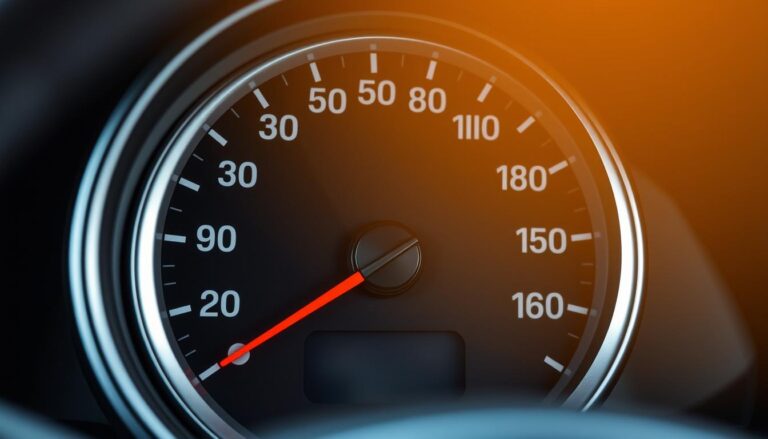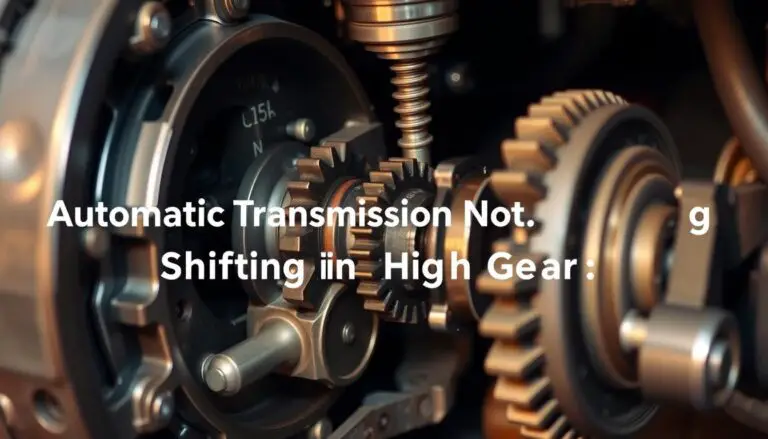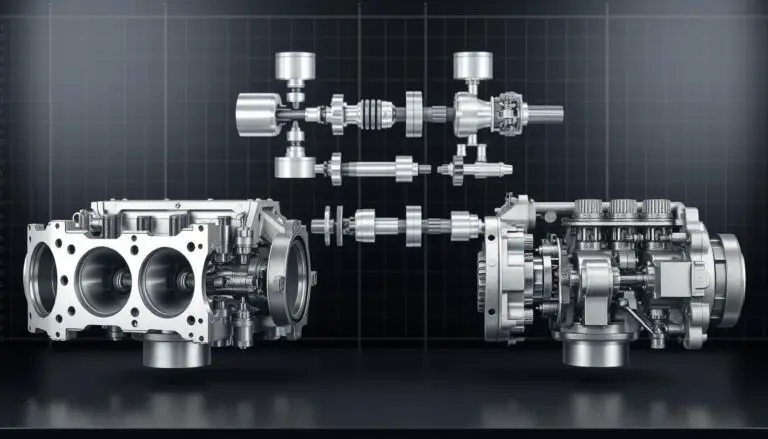A crooked steering wheel can be a sign of underlying issues with your vehicle’s alignment. When the steering wheel is not properly aligned, it can lead to uneven tire wear, reduced fuel efficiency, and compromised safety on the road.
Addressing a crooked steering wheel is crucial for maintaining your vehicle’s overall health and ensuring a smooth driving experience. Proper steering wheel alignment is essential for preventing further damage to your vehicle’s suspension and steering system.
Key Takeaways
- Uneven tire wear can result from a crooked steering wheel.
- Proper steering wheel alignment improves fuel efficiency.
- A misaligned steering wheel can compromise vehicle safety.
- Regular checks can help identify alignment issues early.
- Correcting steering wheel alignment can prevent further vehicle damage.
Understanding a Crooked Steering Wheel
Drivers often notice their steering wheel is off-center, a condition that can arise from various factors related to car steering problems. This misalignment can be a source of concern, as it may indicate underlying issues with the vehicle’s steering or suspension system.
What Exactly Is a Crooked Steering Wheel?
A crooked steering wheel refers to a condition where the steering wheel is not centered or is tilted when driving straight. This can be due to several reasons, including improper wheel alignment or issues with the steering column. When the steering wheel is not properly aligned, it can cause uneven wear on tires and other steering components, potentially leading to more severe problems if not addressed.
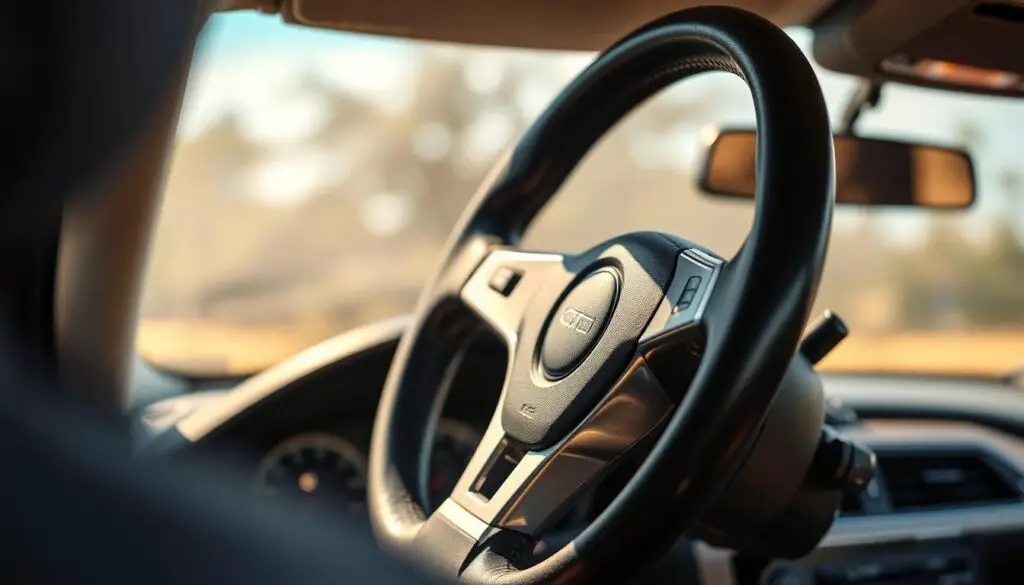
Signs Your Steering Wheel Is Misaligned
Several signs can indicate that your steering wheel is misaligned. These include:
- The steering wheel is off-center when driving on a straight road.
- The vehicle pulls to one side while driving.
- Uneven wear on tires is noticeable.
- Vibrations are felt through the steering wheel.
For more information on how alignment issues can affect your vehicle’s performance, you can visit this page to understand the potential consequences of improper alignment.
Safety Implications of Driving with a Crooked Steering Wheel
Driving with a crooked steering wheel can have significant safety implications. It can lead to reduced control over the vehicle, especially at high speeds. Moreover, the uneven wear on tires and other components can result in premature failure, potentially causing accidents. Therefore, it’s crucial to address steering wheel misalignment promptly to ensure safe driving conditions.
Common Causes of a Crooked Steering Wheel
Several common causes can lead to a crooked steering wheel, including problems with the vehicle’s alignment, suspension, and steering system. Understanding these causes is crucial for identifying and fixing the issue.
Wheel Alignment Issues
Wheel alignment issues are a primary cause of a crooked steering wheel. When the wheels are not properly aligned, it can cause the steering wheel to become misaligned. Improper alignment can result from various factors, including wear and tear on the vehicle’s suspension and steering components, or from incidents like hitting a pothole. Regular wheel alignments can help prevent this issue.
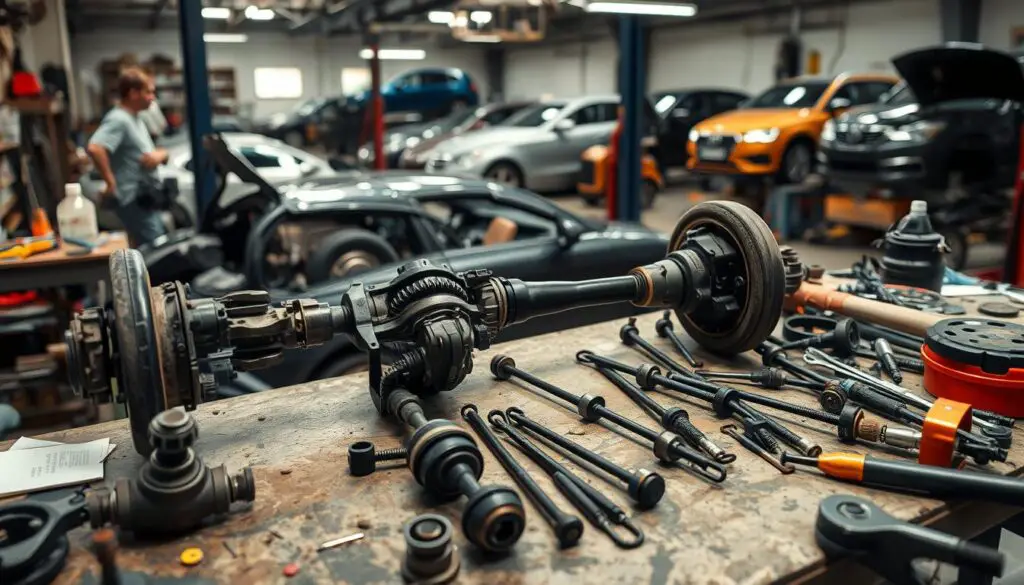
Suspension Problems
The suspension system plays a critical role in maintaining the vehicle’s stability and alignment. Suspension problems, such as worn-out or damaged components, can lead to a crooked steering wheel. Issues like a broken or loose suspension part can significantly affect the steering wheel’s alignment.
Steering Component Wear and Damage
Worn or damaged steering components can also cause the steering wheel to become crooked. Parts like the steering rack, tie rods, and control arms are essential for maintaining proper steering alignment. When these components wear out or get damaged, it can lead to steering wheel misalignment.
Tire-Related Issues
Tire-related problems, such as uneven tire wear or improperly inflated tires, can contribute to a crooked steering wheel. Uneven tire wear can indicate alignment issues or suspension problems, while underinflated or overinflated tires can affect the vehicle’s handling and steering.
By understanding these common causes, vehicle owners can take the first step towards diagnosing and fixing a crooked steering wheel. Regular maintenance and inspections can help identify these issues early on, making it easier to perform a DIY steering wheel fix.
Diagnosing Your Steering Wheel Crooked: Common Reasons and Fixes
A crooked steering wheel can be a symptom of various issues, and diagnosing it involves several key steps. To effectively identify and fix the problem, follow this systematic approach.
Step 1: Perform a Visual Inspection
Begin by conducting a thorough visual inspection of your vehicle’s steering system. Check for any signs of wear or damage on the steering wheel, column, and connected components. Look for uneven tire wear, loose or worn-out suspension parts, and any other visible issues that could be contributing to the crooked steering wheel.
- Inspect the steering wheel for any signs of damage or excessive wear.
- Check the steering column and connected components for any signs of wear or misalignment.
- Look for uneven tire wear, as this can be a sign of alignment issues.
Step 2: Conduct a Road Test
A road test is crucial for understanding how your vehicle handles and whether the steering wheel is indeed crooked. Drive on a straight, flat road and check if the vehicle pulls to one side. Pay attention to any vibrations or unusual noises while driving.
- Drive on a straight road to check if the vehicle pulls to one side.
- Pay attention to any vibrations or unusual noises.
- Check if the steering wheel is centered when driving straight.
Step 3: Check Tire Pressure and Condition
Incorrect tire pressure or uneven tire condition can cause your steering wheel to be crooked. Check the tire pressure of all four tires and ensure they are at the recommended levels. Also, inspect the tires for any signs of uneven wear or damage.
- Check tire pressure and adjust to the recommended levels.
- Inspect tires for uneven wear or damage.
- Rotate tires if necessary to ensure even wear.
Step 4: Inspect Suspension Components
Worn-out or damaged suspension components can also cause a crooked steering wheel. Inspect the shocks, struts, and control arms for any signs of wear or damage. Replace any damaged components to ensure proper alignment and steering.
- Inspect shocks and struts for signs of wear or leakage.
- Check control arms and other suspension components for damage.
- Replace any worn-out or damaged suspension parts.
DIY Solutions for a Crooked Steering Wheel
Correcting a crooked steering wheel involves understanding the potential causes and applying the appropriate fixes. Vehicle steering issues can often be resolved with simple DIY adjustments, saving you time and money.
Adjusting the Steering Wheel Position
One of the simplest fixes is adjusting the steering wheel position. Many vehicles have adjustable steering columns that can be moved up, down, in, or out to achieve a comfortable and aligned position. To adjust, locate the lever or button under the steering column, pull or press it, and move the steering wheel to the desired position. Ensure it’s locked back in place securely.
Correcting Tire Pressure Imbalances
Tire pressure imbalances can cause your steering wheel to become crooked. Check your vehicle’s tire pressure using a tire pressure gauge and compare it to the recommended pressure listed on the tire information placard on the driver’s side doorjamb or in your owner’s manual. Adjust the tire pressure as needed to ensure all tires are at the recommended pressure.
Tightening Loose Steering Components
Loose steering components can also lead to a crooked steering wheel. Inspect your vehicle’s steering system for any loose parts, such as the tie rods or steering rack. Tightening these components can often resolve the issue. Be sure to consult your vehicle’s repair manual for specific instructions and torque specifications.
Basic Alignment Adjustments at Home
While a professional alignment is recommended for precise adjustments, you can make basic alignment checks at home. Measure the distance between the tire and the vehicle’s frame on both sides to check for even alignment. If the measurements are significantly different, you may need to adjust the toe alignment by turning the tie rods. However, this is a more complex task and may require professional assistance.
Safety Precautions When Working on Steering Systems
When working on your vehicle’s steering system, safety is paramount. Always refer to your vehicle’s repair manual for guidance. Ensure the vehicle is securely supported on jack stands if you need to work underneath it. Never rely on a jack alone to support the vehicle. Additionally, be cautious when handling sharp or moving parts, and consider wearing protective gear like gloves and safety glasses.
By following these DIY solutions, you can potentially fix a crooked steering wheel and improve your vehicle’s overall handling and safety. Always be mindful of your vehicle’s specific needs and limitations, and don’t hesitate to seek professional help if you’re unsure about any aspect of the repair.
Conclusion
A properly aligned steering wheel is crucial for safe and efficient vehicle operation. Throughout this guide, we’ve explored the common causes of a crooked steering wheel and provided step-by-step instructions for diagnosing and fixing the issue.
By understanding the importance of steering wheel alignment and applying the DIY solutions outlined in this guide, vehicle owners can ensure their car is running smoothly and safely. Regular maintenance, including checking tire pressure and inspecting suspension components, can help prevent steering wheel misalignment.
Proper steering wheel alignment not only enhances vehicle performance but also contributes to a safer driving experience. By following the guidelines and tips provided, readers can take proactive steps to maintain their vehicle’s steering system and enjoy a smoother ride.
FAQ
What are the common causes of a crooked steering wheel?
Common causes include wheel alignment issues, suspension problems, worn or damaged steering components, and tire-related problems such as uneven tire wear or improper tire pressure.
How do I know if my steering wheel is misaligned?
Signs of a misaligned steering wheel include the steering wheel being off-center when driving straight, uneven tire wear, and the vehicle pulling to one side while driving.
Is it safe to drive with a crooked steering wheel?
No, driving with a crooked steering wheel can be hazardous as it may indicate underlying issues with your vehicle’s alignment or suspension, potentially leading to reduced control over the vehicle and increased risk of accidents.
Can I adjust the steering wheel position myself?
Yes, adjusting the steering wheel position can be a simple DIY task, but it’s essential to consult your vehicle’s manual or seek professional help if you’re unsure about the process.
How do I perform a basic alignment adjustment at home?
Basic alignment adjustments involve checking and adjusting the toe, camber, and caster angles of your vehicle’s wheels. However, this requires specialized knowledge and equipment, so it’s recommended to seek professional assistance.
What safety precautions should I take when working on steering systems?
When working on steering systems, ensure you follow proper safety protocols, including wearing protective gear, using jack stands, and consulting your vehicle’s manual to avoid injury or further damage to your vehicle.
Can tire pressure imbalances cause a crooked steering wheel?
Yes, tire pressure imbalances can contribute to a crooked steering wheel, as uneven tire pressure can affect the vehicle’s alignment and cause the steering wheel to become off-center.
How often should I check my vehicle’s alignment?
It’s recommended to check your vehicle’s alignment every 6,000 to 12,000 miles or whenever you notice signs of misalignment, such as a crooked steering wheel or uneven tire wear.
